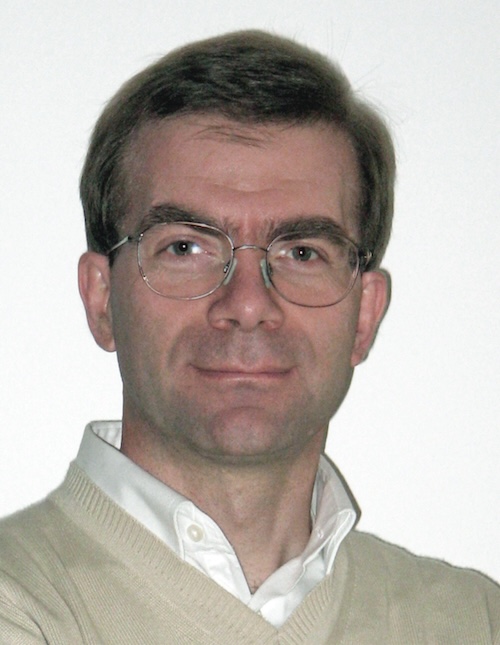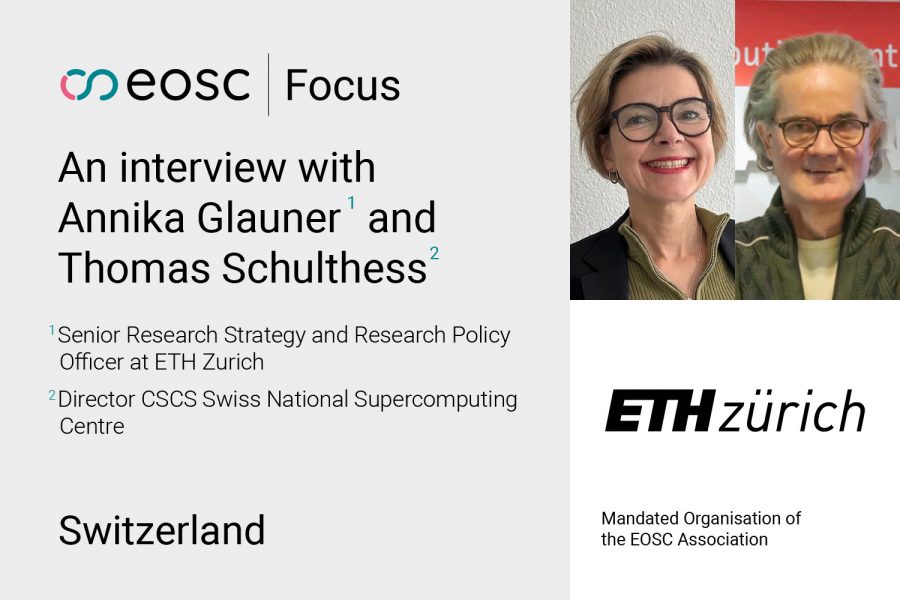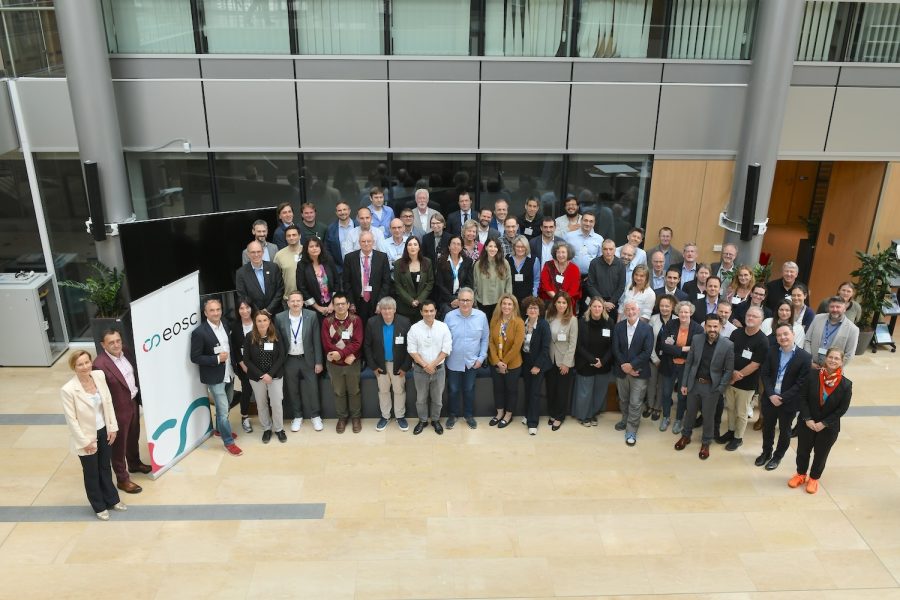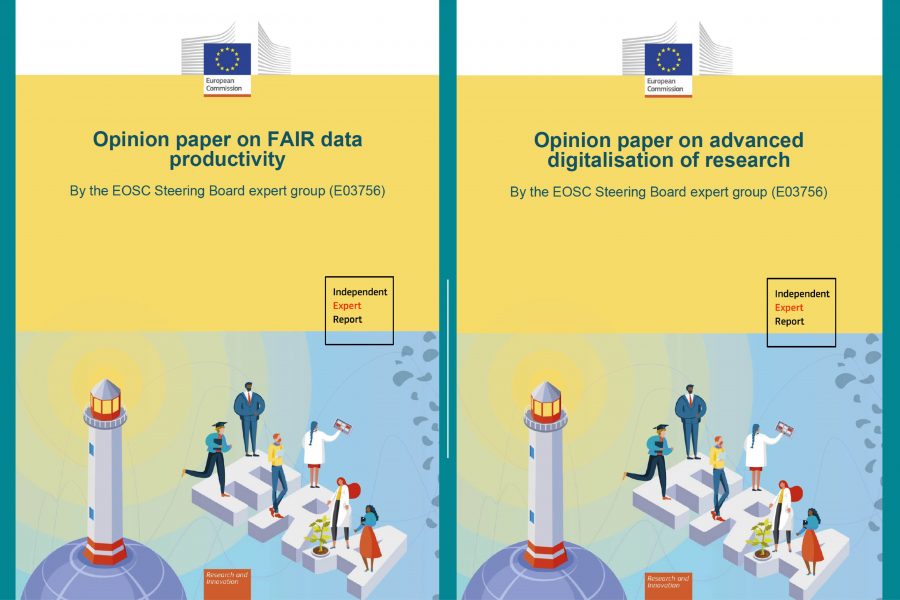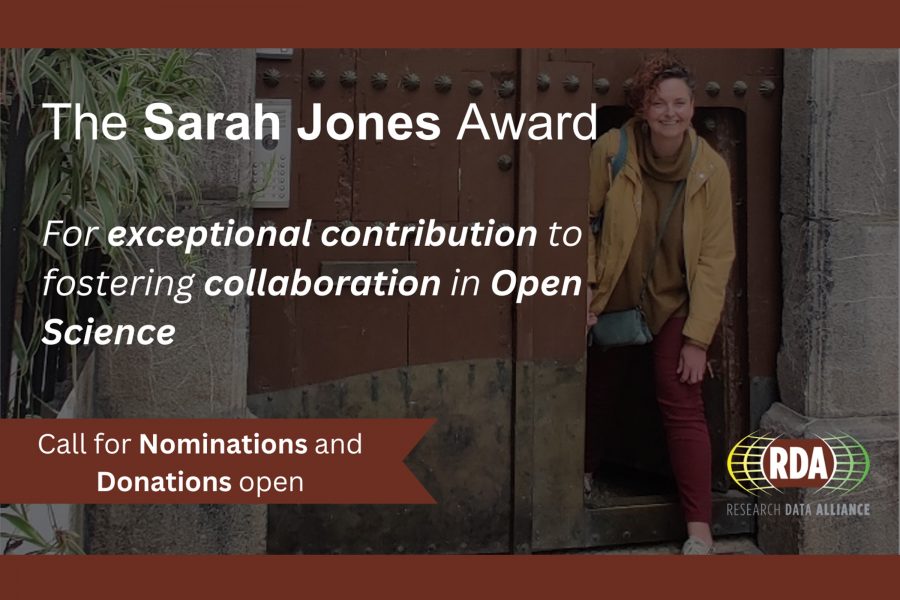This interview is part of a series coordinated by the EOSC Focus project. The interviews aim to highlight the role of the EOSC Association’s Mandated Organisations. By bringing their activities and insights to the forefront, the EOSC Focus interviews will help to reinforce the connections between each country’s Mandated Organisation and its EOSC Association Member and Observer organisations, as well as to make visible the work going into the implementation of EOSC at the national and institutional levels.
Isabel Caetano (EOSC Association) and Kaori Otsu (CREAF) interviewed Mauro Campanella, who is responsible for international research at Consortium GARR. As the EOSC-A Mandated Organisation for Italy, Consortium GARR aims to align national research strategies with FAIR principles, prioritising the human dimension of Open Science. Campaella also highlighted the activities of the Italian open source community and emphasised the importance of research infrastructures and their sustainability for the development of the EOSC ecosystem.
How do you see the role of your organisation as one of the four founders of the EOSC Association and the Mandated Organisation for Italy?
Consortium GARR, the Italian Research and Education Network – NREN, has the main role as a facilitator connecting our community to implement Open Science. Universities and other members of the scientific and cultural humanities communities are strongly interested in Open Science. Now that Open Science is becoming the new normal, facilitated by European projects, everyone is more knowledgeable about its importance for modern research. Our motivation is to align modern research strategies with those of EOSC. In particular, the FAIR principles and Open Science are very supportive of data preparation for AI.
How does your organisation promote the creation of the “EOSC ecosystem” in Italy?
Before joining the EOSC Association, Italy established a coordination structure, the Italian Computing and Data Infrastructure (ICDI) – composed of 26 members, that hasn’t formally become a legal entity yet. We have regular meetings with all members of the ICDI initiatives, and interested organisations. Since 2022 we have coordinated the project named Skills4EOSC. The project is setting up a pan-European network of competence centres to speed up the training of European researchers and to harmonise the training of new professionals for scientific data management. Among the activities carried out by GARR in this project is the Open Science Café that is explicitly directed to enrich the knowledge of participants and spread the Open Science culture. We are prioritising the human element of research and support researchers and academics in embracing EOSC.
How do you translate European and international developments into national discussions, and who are the key actors?
In the last few years, the National Recovery and Resilience Plan (NRRP 2021-2026), which is a part of NextGenerationEU, has accelerated the creation of scientific projects, research infrastructures and e-infrastructures to support data exchange. GARR is a partner in two projects, National Research Centre for High Performance Computing, Big Data and Quantum Computing (ICSC) supported by the IFAB Foundation in Bologna, and the TeRABIT project with the goal of coordinating high-performance computing and networking. The GARR network directly connects all main research computing centres across the country, especially those of the National Institute for Nuclear Physics (INFN) and the National Research Council (CNR). We collaborate on Open Science to create a physical ecosystem that will fit the human and the scientific ecosystems. We focus on providing networking communication for storage and computing for research to allow large amounts of data to communicate between all interested components, including the future European data spaces. The GARR network is connected to the European research environment through GÉANT at a speed of 400 gigabits per second.
Has the National Plan for Open Science, published in 2022, been effective in Italy?
The Ministry of University and Research (MUR) published the National Plan for Open Science (PNSA) in 2022 without any associated funding. Currently, the investments in Open Science come from the NRRP-funded projects and various activities of the Italian research community. In each NRRP project, efforts are made to develop Open Science and create data policies.However, it’s expected that the Ministry will facilitate the creation of a harmonised Open Science ecosystem. I’m trying to underline to researchers the usefulness of FAIR principles, as a pillar of Open Science. Actually, the same principles are used to cure and prepare data for input for deep learning of “AI”. I discuss with them that FAIR principles are an effective way of ensuring the safety and security of data and of preparing data for analysis. Hopefully, this will help to underline the importance of data management and data preparation and foster Open Science.
You mentioned the role FAIR principles could play in AI developments. Could you give us some examples?
In astronomy, the testing of AI in cosmological simulation may reduce very long simulation times. AI can also support astronomers in analysing faster and with higher accuracy the very large dataset of images of the universe. There are also existing applications in the pharmaceutical research and other disciplines, which showcase the importance of having curated data and share, using Open Science principles, the results to obtain mutual value.
What funding sources are currently available and needed to develop EOSC in Italy?
The NRRP projects are expected to end in 2025, as a general rule. For research infrastructure projects, the Ministry required ten years of sustainability after the projects’ end. This means that from now on, there are about 12 years of sustainability until 2036. Research infrastructures will be more important in the near future and will need to adhere to Open Science principles. The sustainability of research infrastructures and of European Commission-funded research will be one of the key elements to contribute to the development of the EOSC ecosystem.
Do you see research infrastructures as potential EOSC thematic nodes?
They already are. My suggestion for the EOSC strategy is that we should leverage, as much as possible, what already exists. There are excellent data repositories and large computing infrastructures that offer services to users and already use principles, which are very close to the latest definition of Open Science practices and policies. As research infrastructures continue to evolve, High-Performance Computing (HPC) centres will have to access more and more data. Thematic infrastructures need to ensure sustainability and expand storage and computing resources. Since these research infrastructures have many years of experience, they know their own communities well and know how to relate with other scientists. This is a very valuable knowledge to leverage for EOSC.
What are the main strengths and areas of improvement relative to EOSC development in Italy?
The strength is that in Italy there is a growing community that is quite active and promotes Open Science and the dissemination and adoption of FAIR principles. A specific community that GARR facilitated last year was the Data Steward community. They were identified and encouraged by the Skills4EOSC project and started to organise themselves fast. Areas of improvement include enhanced coordination with GARR as the Mandated Organisation and by the Ministry so we are effective at the national and European levels. The human dimension will be specifically challenging in the next few years, especially equipping the young generation with the skillsets required by the new environments. It is not just the adoption of Open Science principles, but also the use of the evolving HPC and the AI-related developments. The universities have a tough task to keep up with the courses and technical developments. The number of students prepared is still insufficient.
Are you facing any challenges with the development of EOSC in Italy?
The main challenge is to keep up with the rest of Europe and the rest of the world. The Europe-wide policies on the use of data present a challenge. We need to define the needed policies. This is crucial for the use of FAIR principles, because different continents apply different policies. Another challenge is to maintain a constant interaction between all actors, especially in Italy, where we are not yet as well-organised for Open Science as in other European countries. However, Italy has notable creative resources. The differences between European countries are a richness that can benefit all.
What are some good practices showing EOSC’s impact?
The open source software community is very active in Italy. We need to collaborate to avoid too strict policies on open source at the level of the European Union. There is also a good collaboration on reducing the cost of scientific journals and providing equitable access to research outputs. It is important that the community contributes and actively participates in the creation of the right policies on governance, facilitating the use of Open Science outputs and results. Open source is threatened by cyber security. We should instead highlight the importance of open source and the right use of open source.
What are the key Italian initiatives promoting open source software?
The open source software is essential to research and innovation. It is routinely used by most researchers, who also contribute to its development. The government supports the use of open source for public administration. At the same time, many industries now use open source in their products. It’s not just for research. Open source software, like for example the Unix operating systems, has an impact on the commercial environment. It allows for a faster development of solutions by using open source rather than having closed walls around protected environments.
What is your future vision? Could you describe the EOSC post-2027 discussion in Italy?
I am an optimist. Transparency and clear communication between all partners is essential. We should find the right way to structure the efforts in each country. Looking at how data spaces are developing, I expect that data spaces will follow a development path similar to the one drawn by EOSC.
EOSC post-2027 is an ongoing discussion, but the question is: Who will be politically responsible and steer EOSC in the future? This question is key for the research community and I expect a dialogue with Member State representatives to reach a common position, also taking into account the landscape of research infrastructures and e-infrastructures.
Do you see Italy steering the leadership in the future EOSC?
We need to internally align, have a common view of Open Science, and follow the European vision. Many large research initiatives span many continents and useful data is often needed from diverse and distant locations. The implementation of that vision and the readiness of each country will differ. In principle, technological advancements can provide the right type of equipment in each country. We should acknowledge that local policies will set the pace and the objectives of evolution. Being dynamic and allowing for different timings has proven effective when scenarios change fast.
Would you like to highlight any recent GARR events?
We have our annual GARR Conference 2024 from 29 to 31 May 2024, and there are some sessions devoted to Open Science and data. We will continue to talk about open and fair data at the next events and conferences. There are many events related to Open Science across Italy throughout the year.
About Consortium GARR
GARR is the ultra-broadband network dedicated to the Italian research and education community. Its main objective is to provide high-performance connectivity and to develop innovative services for the daily activities of researchers, professors and students as well as for international collaboration. GARR network is designed and managed by Consortium GARR, a non-profit association founded under the auspices of the Ministry of Education, University and Research. The members are CNR, ENEA, INAF, INFN, INGV and CRUI Foundation, representing all Italian universities.
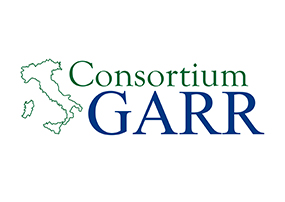
About Mauro Campanella
Mauro Campanella works at GARR, the Italian National Research and Education Network, and is responsible for the consortium’s international research. He is part of a team that created and evolved the GARR network. Campanella has contributed to various projects funded by the European Commission, including a series of projects that evolve the European backbone network GEANT. He is now coordinating a project in Italy to strengthen the collaboration between three research infrastructures to evolve the HPC landscape in the country. Consortium GARR is the EOSC-A Mandated Organisation for Italy and Campanella is GARR’s delegate for EOSC-A.
